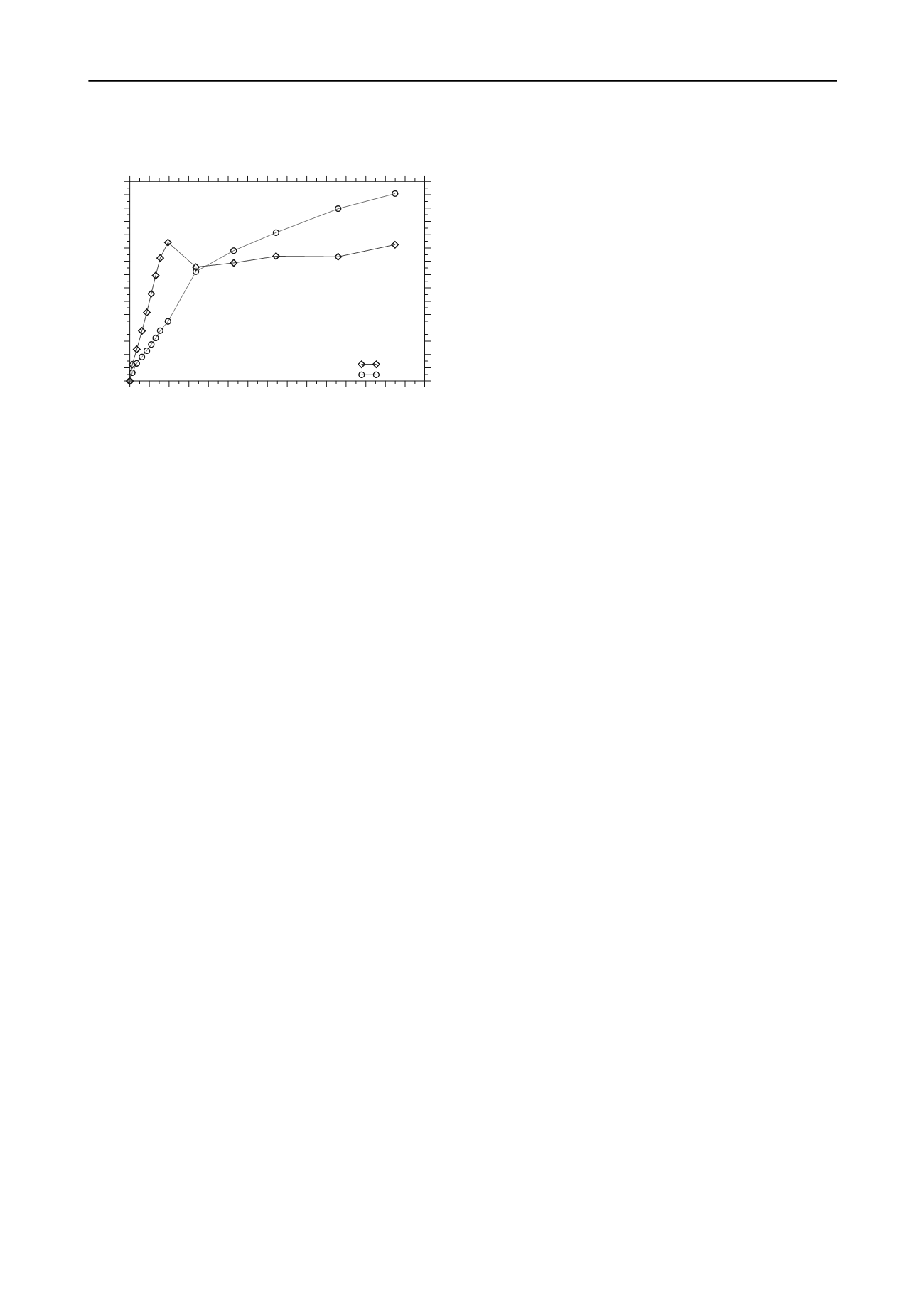
1950
Proceedings of the 18
th
International Conference on Soil Mechanics and Geotechnical Engineering, Paris 2013
0 2 4 6 8 10 12 14 16 18 20 22 24 26 28 30
Nail Movement (mm)
0
10
20
30
40
50
60
70
80
90
100
110
120
130
140
150
Mobilised Skin Friction (kPa)
Legend:
Level 2 - 3
Level 3 - 4
0
10
20
30
40
50
60
70
80
90
100
110
120
130
140
150
0 2 4 6 8 10 12 14 16 18 20 22 24 26 28 30
Preliminary Soil Nail Pullout Test (Y-1/2)
Figure 6. Pull-out test results for nail Y-1/2.
From the pull-out tests, the following observations could be
made:
a) The ultimate skin friction is mobilised at relatively
small nail movement of approximately 4 to 6mm which
is about 3-4% of the diameter of the drilled hole.
b) Only nail Y-1/2 demonstrates the expected behaviour
where initially, more load is transferred to the upper
part of the nail until the upper part reaches the ultimate
skin friction and thereafter, more load is transferred to
the lower part of the nail.
c) Other nails (Y-7 and W/X-16) also demonstrated
behaviour where initially, more load is transferred to
the upper part of the nail. However, the mobilised skin
friction for the upper part of the nail has rather
unexpectedly continued to increase after the initial drop.
This is unexpected and is possibly due to interference
from the shotcreted slope surface where the pull-out
tests were conducted. It is possible that the shotcreted
slope surface restricts the expansion of the soil particles
during testing and contributed to the increase in
mobilised skin friction for the upper part of the nail.
d) The SPT-N values at the level of the tested soil nails
typically range from 5 to 13 (average about 10) and the
mobilised skin friction recorded range from 50 to
140kPa. This indicate a conservative correlation of skin
friction can be 5x SPT-N for soil nail design in
weathered granite or fill.
e) Results of the pull-out tests also indicate the equation
proposed by HA 68/94 (see Eq. 1) underpredicts the
mobilised skin friction considerably.
Q =
’
n
tan
’ + c’ (kN/m
2
)
(1)
where
’
n
= average radial effective stress
’, c’
= soil shear strength parameters
5 CONCLUSIONS
A series of instrumented pull-out tests were carried out for a
proposed basement with excavation up to 20m deep supported
using soil nailed slope. The pull-out test results indicate a
conservative preliminary correlation for skin friction between
the ground and the grouted soil nail of 5x SPT-N can be adopted
for soil nail design in weathered granite or fill.
Further pull-out tests at deeper layers of the subsoil are
currently being carried out at site and the results will be
presented in the future. Some improvement to the current test
procedures will also be carried out such as hacking a larger area
of the shotcreted surface surrounding the test nail in order to
ensure the results are not affected by the shotcreted slope
surface.
6 ACKNOWLEDGEMENTS
The Authors acknowledge the contributions of Mr. Lim Fang
Liang and Mr. Tong Han Seng for their hard work and
dedication as part of the geotechnical design team of the project.
7 REFERENCES
Chow Chee-Meng and Tan Yean-Chin. 2006. Soil nail design: A
Malaysian Perspective.
International Conference on Slopes
, 379-
400.
Chow Chee-Meng and Tan Yean-Chin. 2011. Deep excavation for
basement via soil nailing method.
APEC Seminar on the State-of-
the-practice of Deep Excavation Works from Malaysia, Taiwan and
Hong Kong
, 75-94.
FHWA. 1998.
Manual for design & construction monitoring of soil nail
walls
. USA.
HA 68/94. 1994.
Design Methods for the Reinforcement of Highway
Slopes by Reinforced Soil and Soil Nailing Techniques
. UK.


